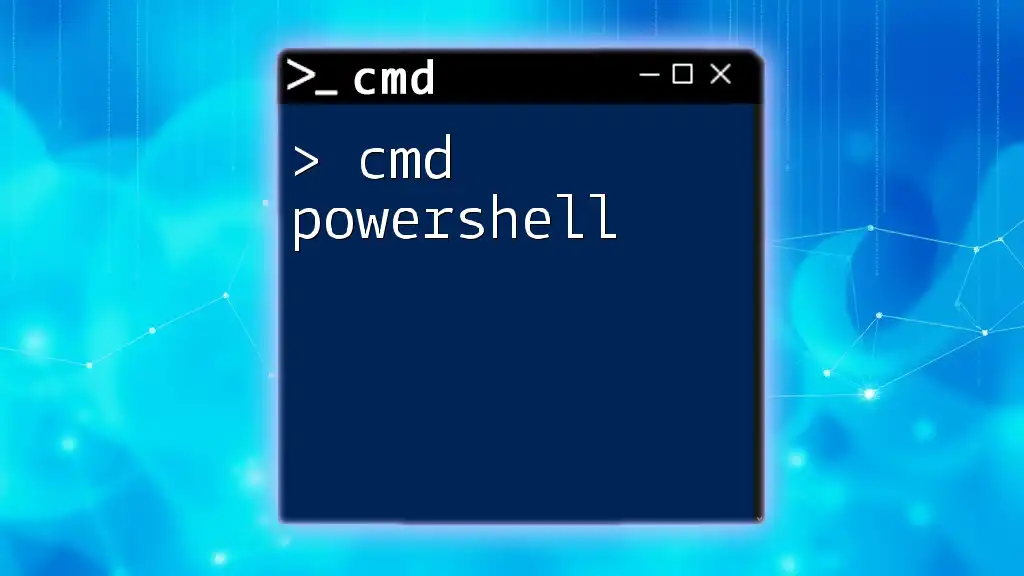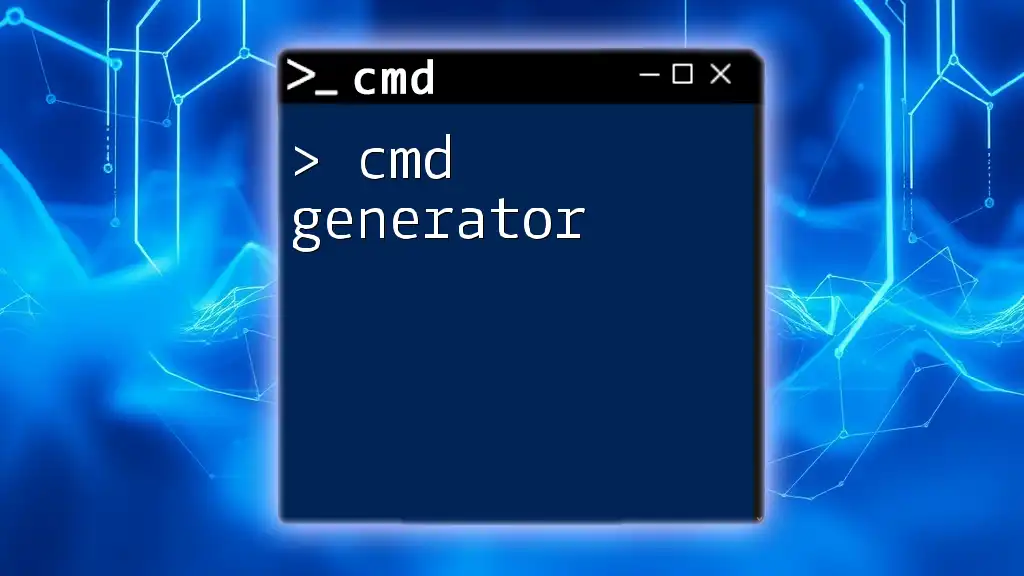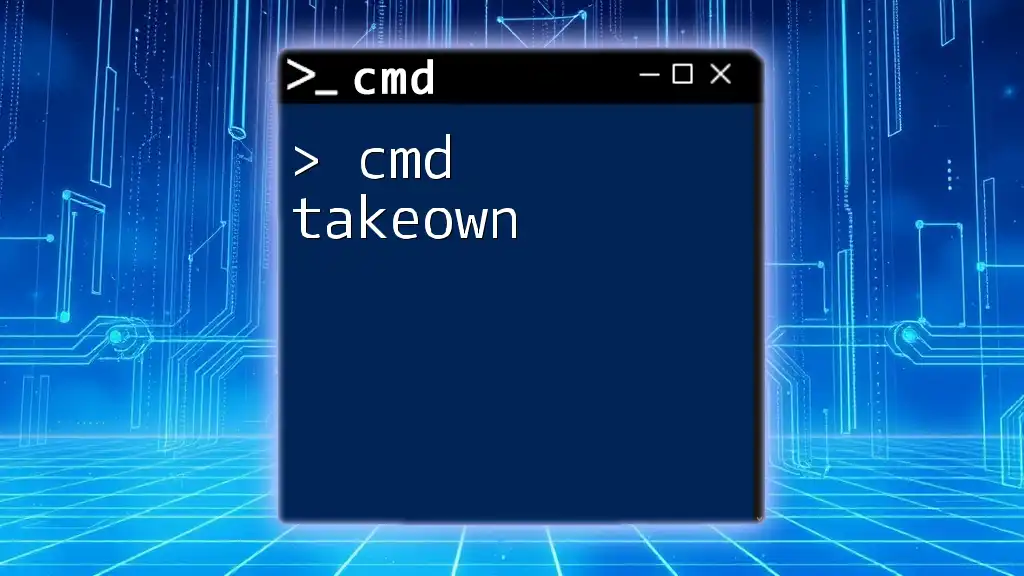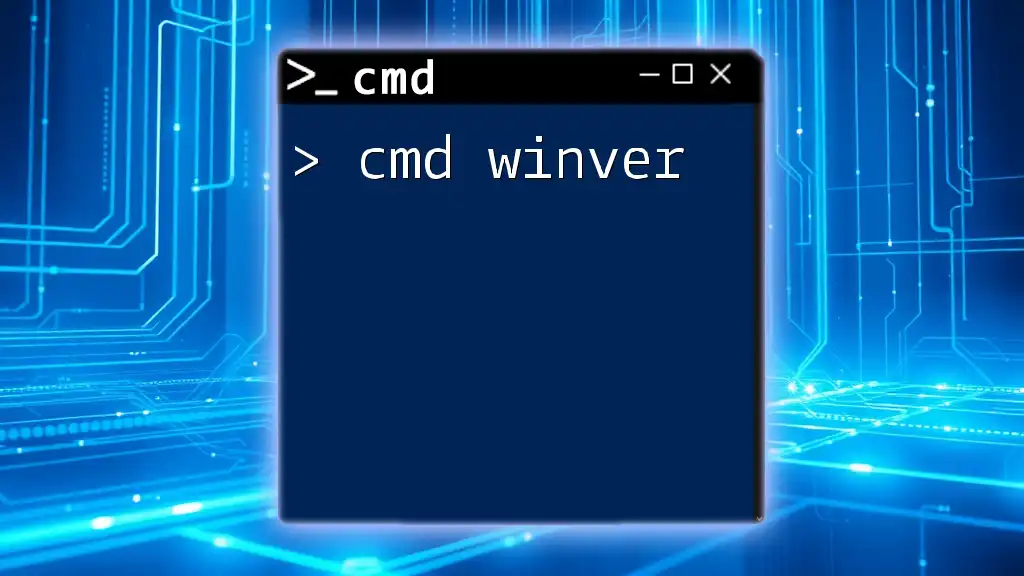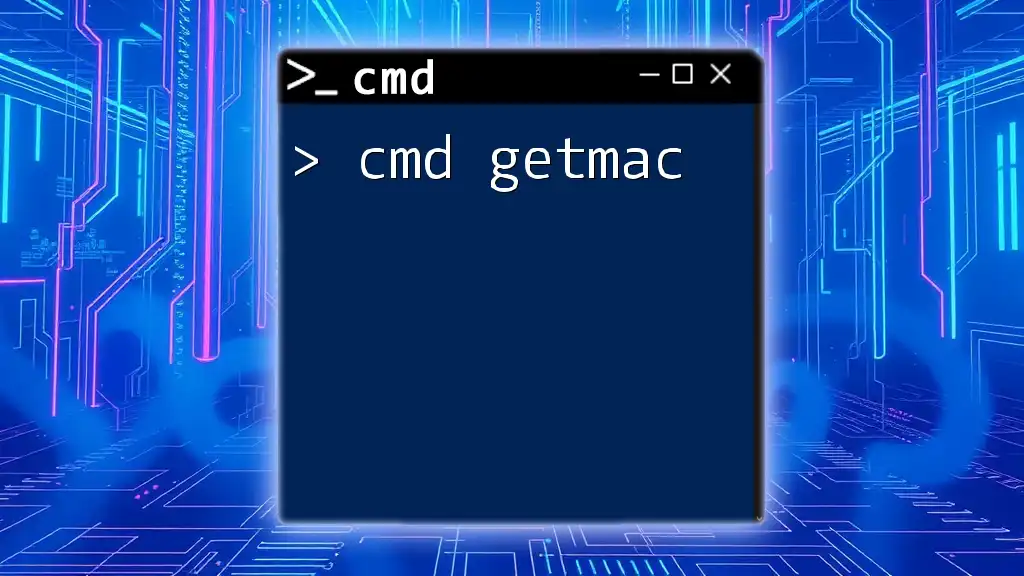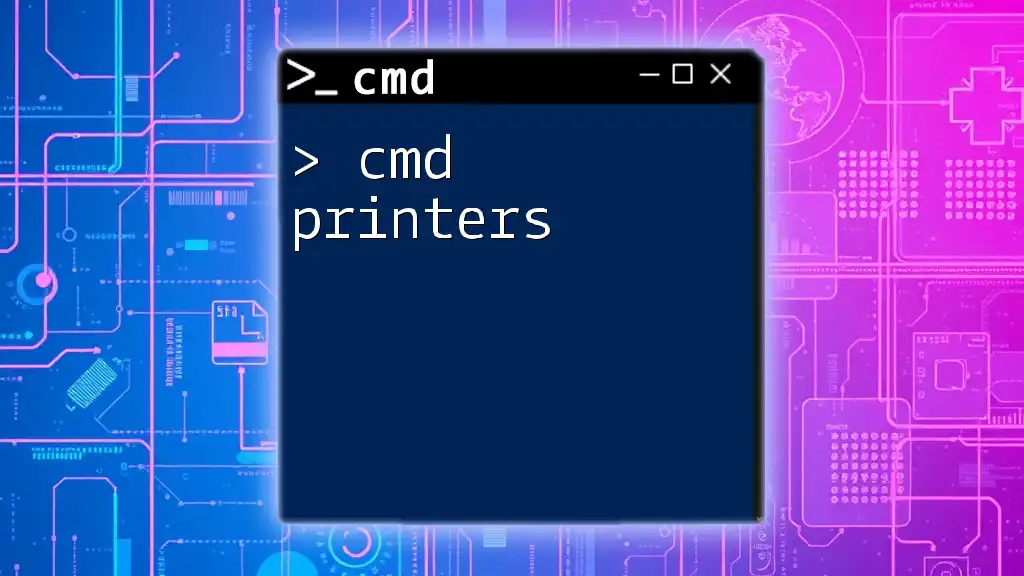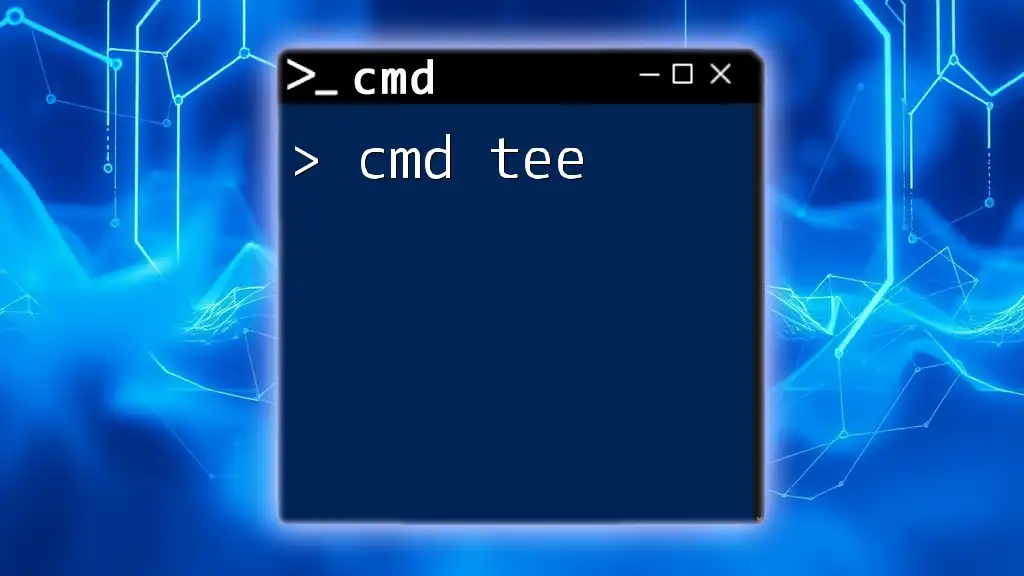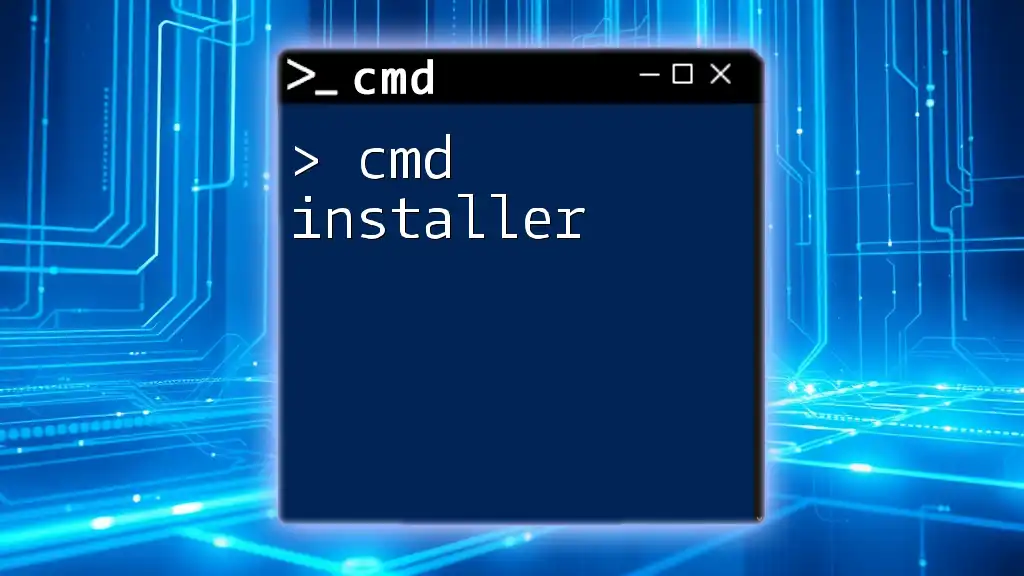The CMD interface, or Command Prompt, is a text-based command-line interpreter in Windows that allows users to execute commands and scripts for system management and automation.
Here’s an example of a simple command that lists all files and directories in the current directory:
dir
What is CMD?
The Command Prompt (CMD) is a command-line interpreter application available in most Windows operating systems. It allows users to execute commands and run scripts through a text-based interface, which provides a more direct and efficient way to interact with the system compared to traditional graphical user interfaces (GUIs). CMD traces its roots back to MS-DOS, the earlier operating system that paved the way for modern Windows systems. Understanding the CMD interface is essential for anyone looking to improve their computer skills, as it enhances productivity and automation.
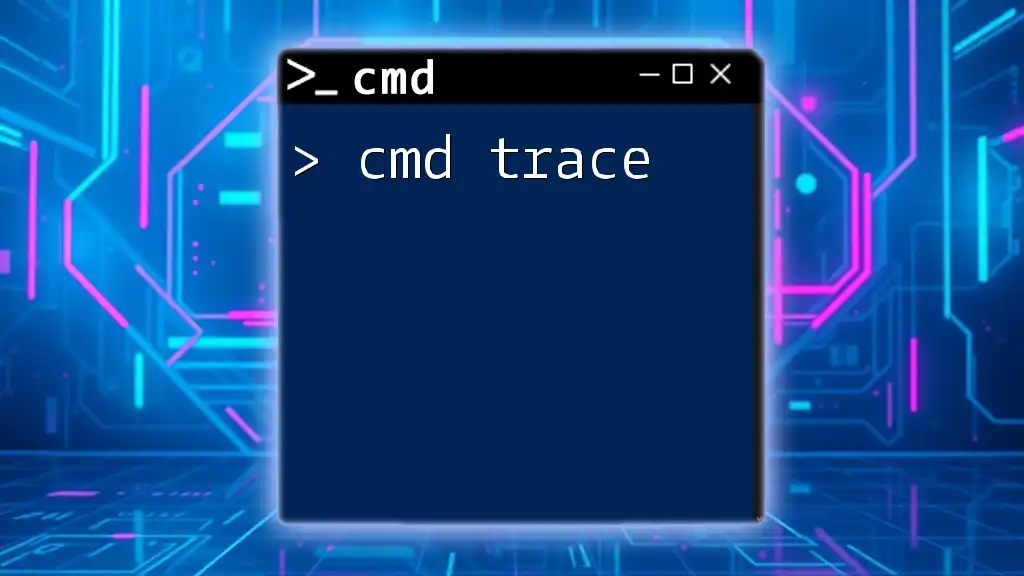
Why Learn CMD?
Learning the CMD interface offers several key advantages:
- Efficiency: Commands can be executed faster than through clicks in a GUI.
- Automation: CMD allows for scripting and batch processing, streamlining repetitive tasks.
- Flexibility: Certain system tasks can only be completed through CMD, which grants access to powerful system features.
- Enhanced Troubleshooting: It provides tools for diagnosing and resolving issues quickly.

Accessing the CMD Interface
To make the most of the CMD interface, you first need to know how to access it:
How to Open CMD on Different Windows Versions
- Using the Run Dialog: Press Windows + R on your keyboard, type `cmd`, and hit Enter.
- Searching in the Start Menu: Click on the Start Menu, type `cmd`, and select Command Prompt from the search results.
- Accessing via File Explorer: Open File Explorer, navigate to the folder you want to access CMD in, then type `cmd` in the address bar and press Enter.
Basic CMD Navigation
When you first enter the CMD interface, you will see a prompt indicating the current working directory. Understanding this prompt is crucial for navigation:
-
Changing Directories: Use the `cd` command to change your location within directories. For example:
cd Documents -
Listing Files and Directories: To see the contents of the current directory, use the `dir` command. For instance:
dir /w
This command lists files in a wide format, making it easier to read.
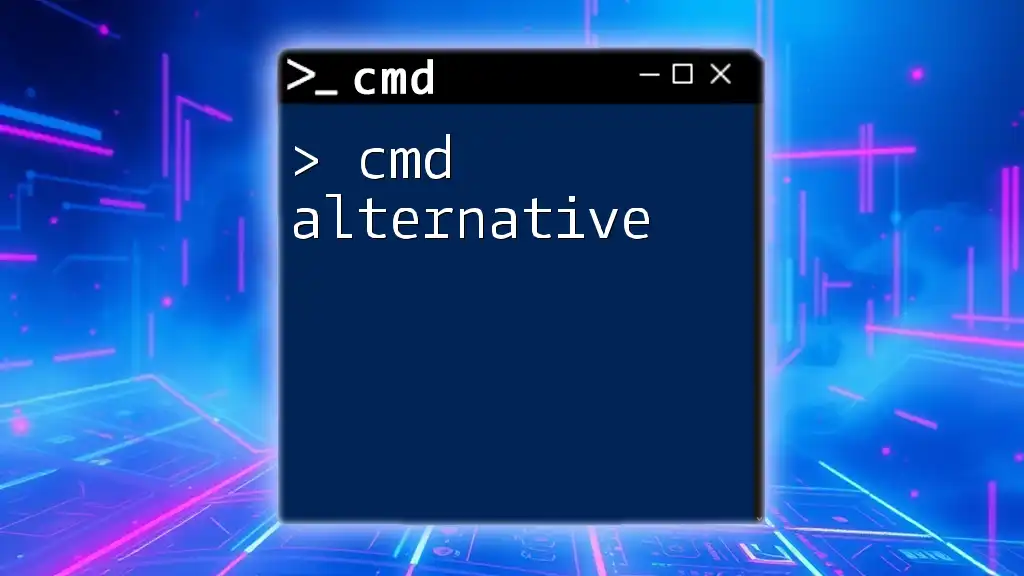
Essential CMD Commands
The CMD interface offers a wide range of commands to perform various tasks efficiently. Below are some essential commands you'll frequently use.
File Management Commands
CMD excels in managing files:
-
Creating Files: You can create simple text files using the `echo` command. For example, to create a file named `example.txt`, you would use:
echo. > example.txt -
Copying and Moving Files: To copy a file from one location to another, use the `copy` command. To move a file, the `move` command is more appropriate. Examples include:
copy source.txt destination.txt move file.txt D:\Folder -
Deleting Files: To remove a file from your system, the `del` command is used. For example:
del file.txt
Be cautious when deleting files, as this action is irreversible unless you have backups.
System Information Commands
CMD is also useful for gathering system information:
-
Checking IP Configuration: The `ipconfig` command displays all current IP configuration information. Executing it will provide details such as the IPv4 address, subnet mask, and default gateway:
ipconfig -
Viewing Network Connections: To see all active network connections, use the `netstat` command. It shows various networking statistics that help diagnose network issues:
netstat
System Management Commands
Managing your system is easier with specific CMD commands:
-
Task Management: The `tasklist` command shows all currently running processes, while `taskkill` can terminate specific processes. Here’s how to use them:
tasklist taskkill /IM processname.exe -
System Shutdown or Restart: To initiate a system shutdown or restart through CMD, the `shutdown` command is utilized. For example, to restart immediately, you would type:
shutdown /r /t 0
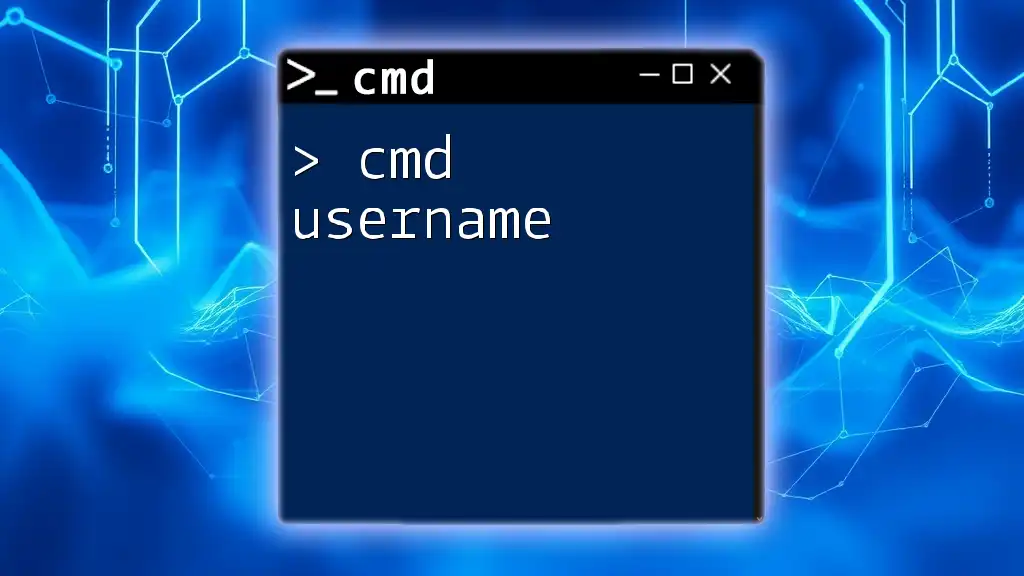
Advanced CMD Techniques
Once you’ve mastered the basics, you can explore advanced features of the CMD interface.
Using CMD with Scripts
A key advantage of the CMD interface is its ability to automate tasks through scripts. Batch files (with .bat extension) enable users to execute a series of commands at once. Here’s an example of a simple batch file that creates a new directory:
@echo off
mkdir ExampleDirectory
echo Directory created
pause
Environment Variables
Understanding environment variables can further enhance your CMD efficiency:
-
What are Environment Variables?: These are dynamic values that can affect the processes on your computer. For instance, the `PATH` variable tells the operating system where to look for executable files.
-
Viewing and Setting Environment Variables: Use `set` to display variables and `set VARIABLE_NAME=value` to create or modify them. Here’s an example:
set PATH=%PATH%;C:\NewPath echo %PATH%
This adds a new path to your existing `PATH` variable.
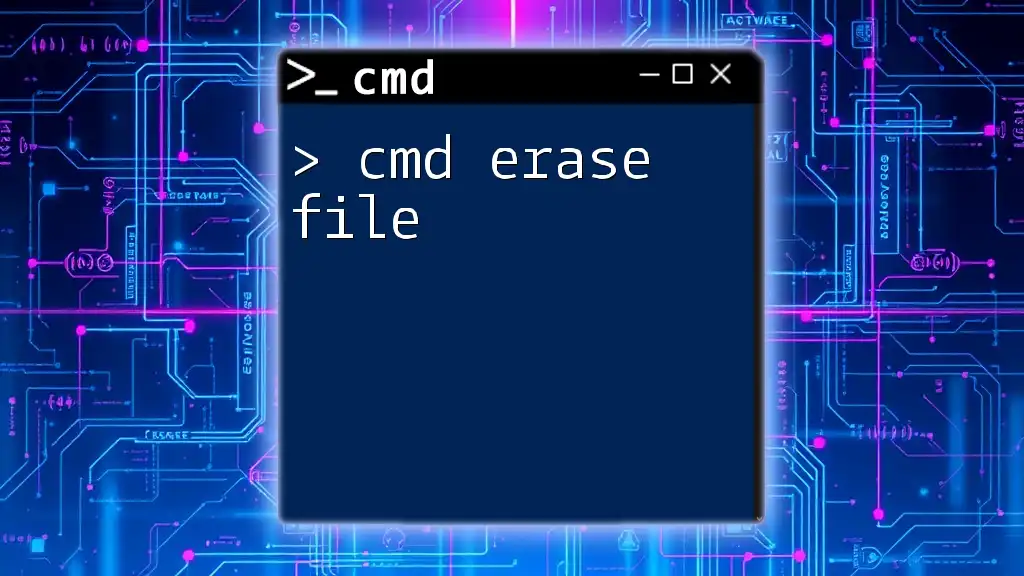
Troubleshooting Common CMD Issues
As with any tool, there may be challenges when using the CMD interface. Common errors and solutions include:
-
Error Messages and Solutions: Issues such as "Access Denied" or "File Not Found" are frequent. It’s essential to check your permissions or file paths when encountering these messages.
-
Tips for Effective CMD Use: Always utilize the `help` command to gain insights into what commands do. You can also access command documentation by typing `command /?`, where `command` is the specific command of interest.

Best Practices for CMD Users
To maximize your effectiveness with the CMD interface, consider these best practices:
-
Shortcuts and Efficiency Tips: CMD allows you to access previous commands with the arrow keys, making it quicker to repeat tasks. The `doskey` command can also enhance your command-line experience by allowing you to create macros.
-
Customizing the CMD Interface: Tailor the appearance of your CMD window by changing colors and fonts to suit your preferences, making it more user-friendly.
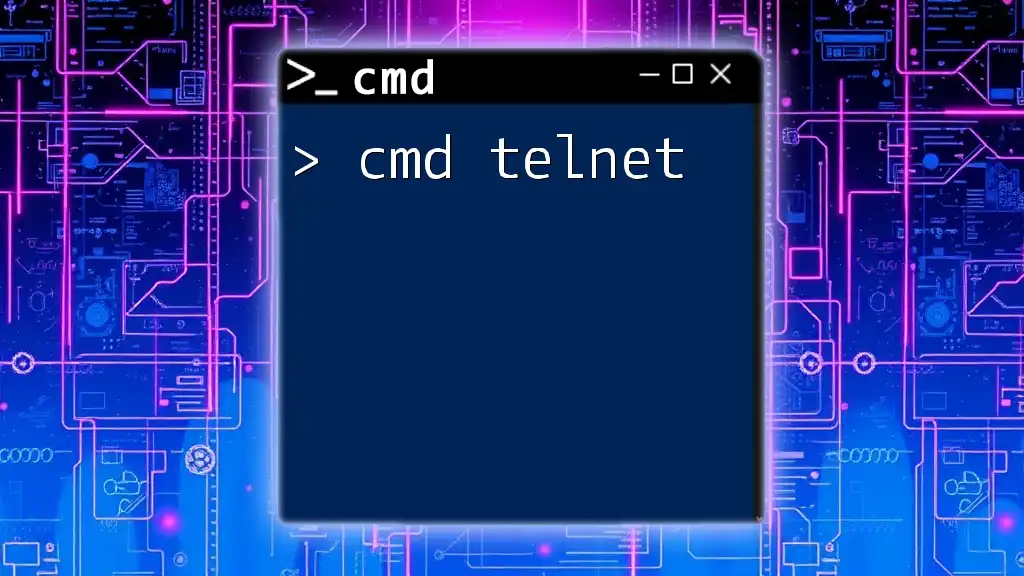
Conclusion
Mastering the cmd interface is essential for anyone looking to enhance their computer skills. This powerful tool not only provides efficiency in executing tasks but also streamlines system management. As you continue to practice your CMD skills, you will discover its vast capabilities. Be sure to experiment with different commands and scripts to further develop your understanding and proficiency with the command line.
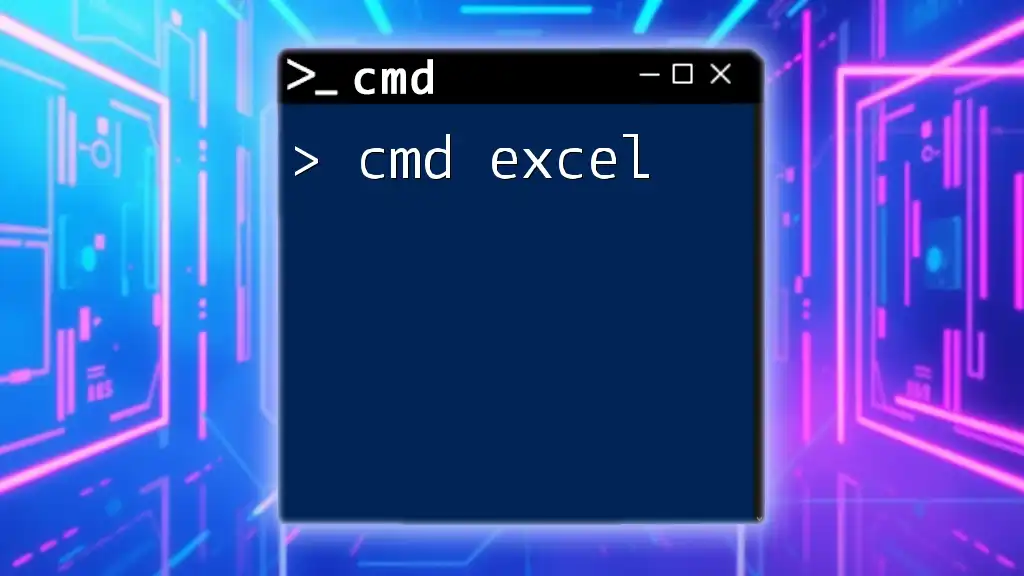
Further Resources
To further enhance your knowledge and skills with the CMD interface, consider accessing these resources:
-
Books and Online Courses: Look for specific literature and platforms dedicated to command-line usage to gain deeper insights.
-
Community and Forums: Engaging in CMD-related communities can provide support and guidance as you navigate through the intricacies of CMD.
Embrace the command line; it’s a gateway to improved efficiency and capabilities that can elevate your tech proficiency to new heights!







